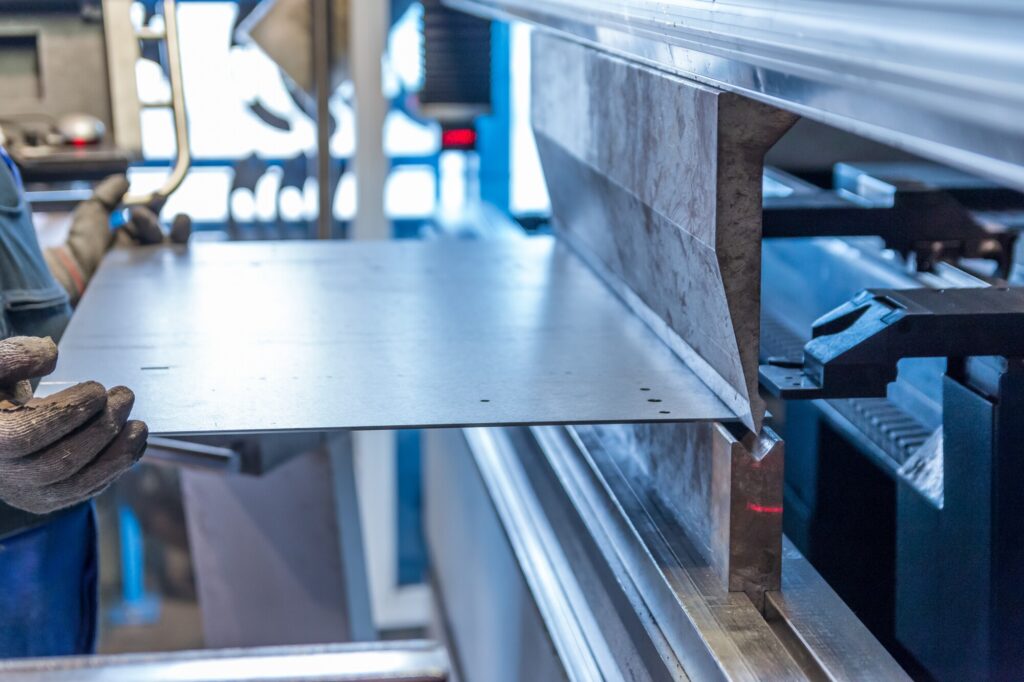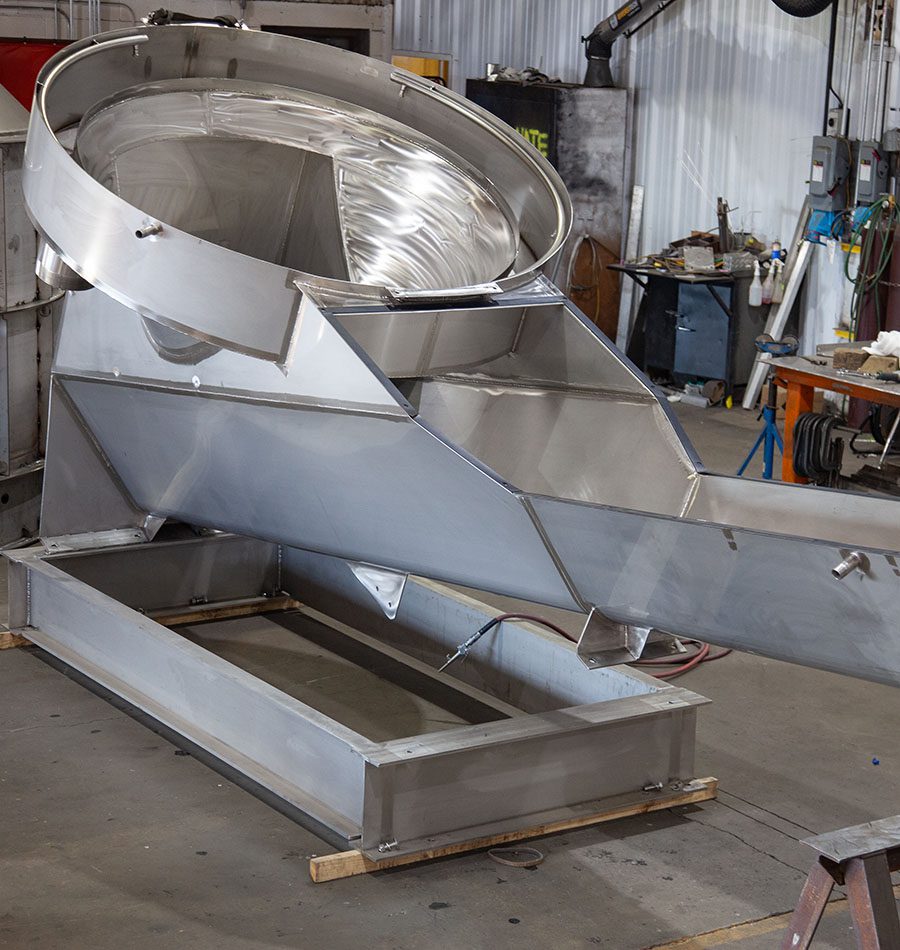Professional Steel Fabricators Melbourne: Top Quality You Can Trust
Professional Steel Fabricators Melbourne: Top Quality You Can Trust
Blog Article
Comprehensive Analysis of Cutting-Edge Techniques in Steel Fabrication Sector
As the steel construction industry continues to develop, the combination of sophisticated strategies has ended up being crucial for staying affordable and satisfying the needs of modern-day production criteria. In this vibrant market where modern technology plays a crucial duty, recognizing the subtleties of these cutting-edge strategies is not simply a choice but a need for those looking to forge ahead in the ever-evolving globe of steel manufacture.
Laser Reducing Advancements
In the world of steel fabrication, laser cutting developments have actually reinvented the accuracy and efficiency of metal shaping processes. By utilizing the power of focused laser light beams, suppliers can currently attain unequaled degrees of accuracy when puncturing numerous types of metals. This technology allows intricate designs to be carried out with minimal product wastefulness, making it a cost-effective option for markets needing high accuracy parts.
Among the vital advantages of laser cutting is its capability to take care of a variety of materials, consisting of stainless-steel, light weight aluminum, and carbon steel, with simplicity. The process produces clean, burr-free edges, getting rid of the need for added completing actions. Moreover, the non-contact nature of laser cutting decreases the danger of product contamination, causing better end products.
In addition, laser cutting machines can be programmed to make swift, exact cuts, significantly minimizing manufacturing time contrasted to standard cutting approaches. This rate and precision make laser cutting especially ideal for automation atmospheres where performance is paramount. As innovation proceeds to advance, laser cutting is positioned to play a progressively vital duty in the steel fabrication sector.

CNC Machining Innovations
The evolution of CNC machining innovations has introduced a new age of accuracy and efficiency in the steel manufacture industry. Computer System Numerical Control (CNC) equipments have changed steel manufacture by supplying unparalleled accuracy and repeatability in the production process. Alpha reo. One of the vital developments in CNC machining is the combination of sophisticated software program systems that allow real-time monitoring and adjustments, causing enhanced performance and quality assurance
Additionally, the advancement of multi-axis CNC devices has enabled the manufacture of complex steel parts with intricate styles that were formerly testing to produce. These machines can perform a vast array of machining procedures, consisting of milling, boring, turning, and grinding, all with high degrees of accuracy.
In addition, the incorporation of automation and robotics in CNC machining has structured manufacturing processes, reduced lead times, and decreased the margin of error. This assimilation of advanced modern technologies not only enhances effectiveness but additionally guarantees constant high quality across all made steel components. In conclusion, CNC machining technologies remain to drive developments in the steel fabrication industry, establishing brand-new requirements for precision and productivity.
Automated Welding Technologies
Automated welding innovations have actually revolutionized the steel manufacture industry, enhancing efficiency and accuracy in the welding process. These advanced technologies use computer-controlled systems to automate the welding procedure, leading to higher efficiency levels and boosted weld quality. One of the key benefits of automated welding is the capability to execute complicated welds with constant precision, minimizing the probability of errors and rework.
Robotic visit homepage welding systems go to the center of automated welding innovations, providing unequaled rate and accuracy. These systems can manage a large range of welding jobs, here from basic to intricate, with simplicity (Alpha reo). By utilizing advanced sensing units and software application, robotic welders can adjust to variants in material and joint geometry, making certain an uniform and trusted weld
Moreover, automated welding innovations enhance work environment security by reducing the direct exposure of human welders to hazardous fumes and extreme heat. As the steel fabrication industry proceeds to develop, integrating automated welding innovations will certainly be vital for business wanting to remain competitive and fulfill the growing needs for premium welded products.
Robotics Integration in Fabrication
Utilizing robot systems in manufacture procedures has actually come to be a pivotal technique for improving performance and accuracy in modern production environments. Robotics combination in steel construction uses a myriad of advantages, consisting of boosted efficiency, improved quality assurance, and enhanced precaution. These advanced robotic systems are geared up with advanced sensors and shows capacities, allowing them to carry out complex jobs with a high degree of accuracy and repeatability.
Among the crucial advantages of robotics integration in steel fabrication is the capacity to automate repeated jobs, such as product handling, reducing, welding, and assembly procedures. This not just quickens production cycles but additionally minimizes the risk of human error, bring about greater general product top quality. Additionally, robots can run 24/7, considerably improving production outcome and meeting tight job deadlines.

3D Printing in Steel Manufacturing
Having actually revolutionized the steel construction sector via robotics combination, the burgeoning expedition of 3D printing in steel production is poised to more breakthrough the realm of modern production strategies. 3D printing, also called additive manufacturing, provides extraordinary layout freedom and intricacy, allowing the development of intricate steel frameworks that were previously unattainable with conventional manufacturing methods. By making use of computer-aided design (CAD) software application, producers can precisely manage the layer-by-layer deposition of steel material, resulting in parts with enhanced performances and geometries.
One of the key benefits of 3D printing in steel production is its capability to reduce product waste dramatically. Unlike subtractive production processes where excess product is cut away, 3D printing just makes use of the necessary quantity of steel needed for the last component. This effectiveness not just results in set you back savings yet also straightens with lasting manufacturing techniques by decreasing environmental impact.
In addition, 3D printing allows quick prototyping and modification, enabling the manufacturing of little batches of complex steel components with brief lead times. As the technology continues to grow and end up being more obtainable, its integration into mainstream steel construction processes is anticipated to drive innovation and effectiveness throughout the sector.
Verdict
To conclude, the steel manufacture industry has seen significant improvements in methods such as laser cutting, CNC machining, automated welding, robotics combination, and 3D printing. These advanced modern technologies have reinvented the way steel products are produced, causing enhanced accuracy, efficiency, and cost-effectiveness. Continued Recommended Reading financial investment in these cutting-edge strategies is critical for the market to remain competitive and fulfill the needs of contemporary manufacturing procedures.
As the steel manufacture sector proceeds to advance, the assimilation of innovative techniques has actually become vital for staying affordable and meeting the demands of contemporary manufacturing standards.One of the crucial benefits of laser cutting is its capability to handle a broad variety of materials, including stainless steel, light weight aluminum, and carbon steel, with convenience.Automated welding innovations have actually reinvented the steel construction sector, boosting performance and precision in the welding process.Having actually revolutionized the steel construction industry with robotics assimilation, the burgeoning exploration of 3D printing in steel manufacturing is positioned to additional development the world of modern production methods.In conclusion, the steel construction sector has seen substantial advancements in methods such as laser cutting, CNC machining, automated welding, robotics integration, and 3D printing.
Report this page